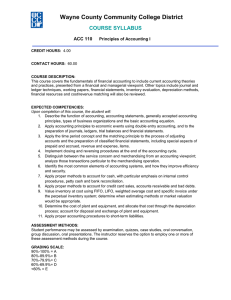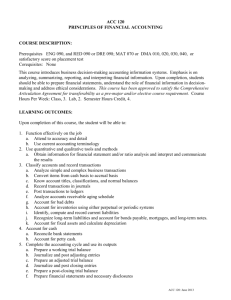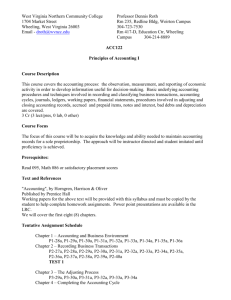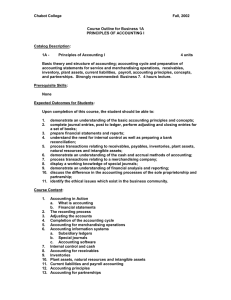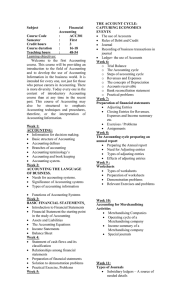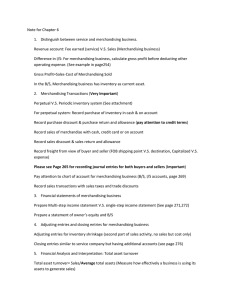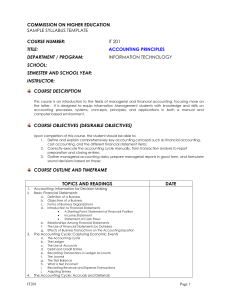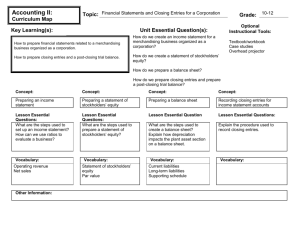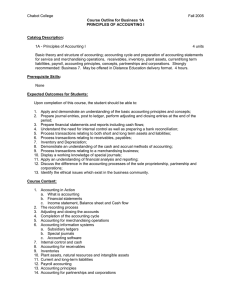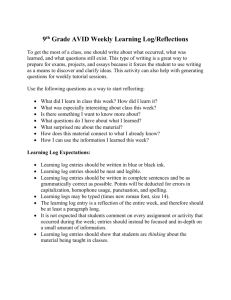ACC 201 Introduction to Financial Accounting (3)
advertisement
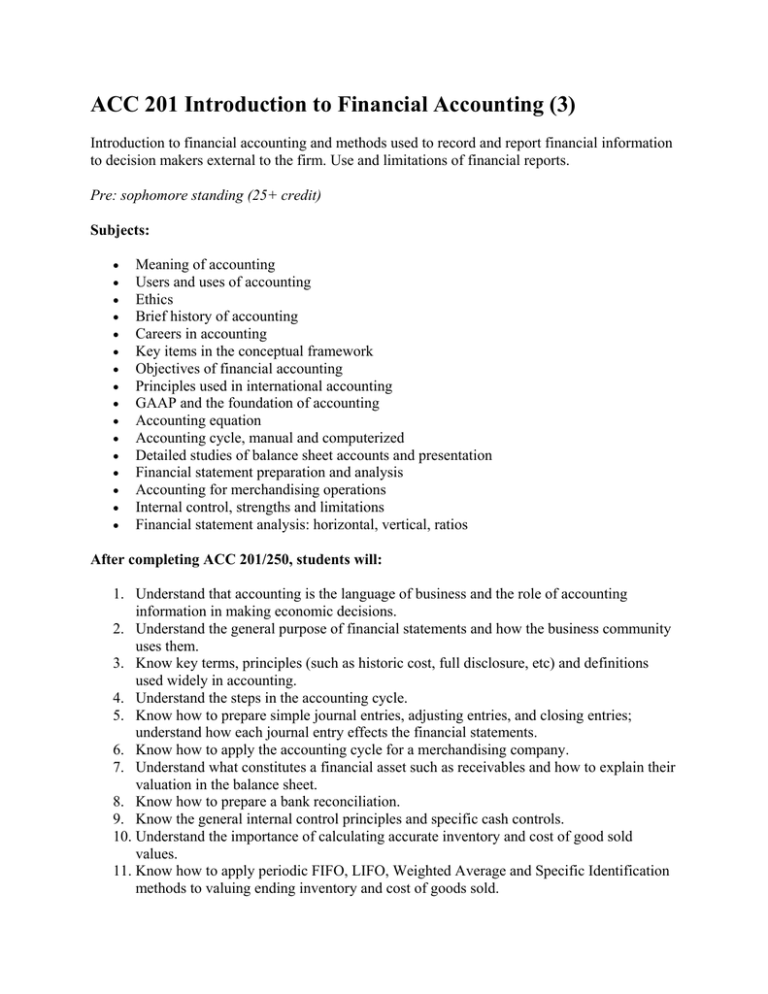
ACC 201 Introduction to Financial Accounting (3) Introduction to financial accounting and methods used to record and report financial information to decision makers external to the firm. Use and limitations of financial reports. Pre: sophomore standing (25+ credit) Subjects: • • • • • • • • • • • • • • • • Meaning of accounting Users and uses of accounting Ethics Brief history of accounting Careers in accounting Key items in the conceptual framework Objectives of financial accounting Principles used in international accounting GAAP and the foundation of accounting Accounting equation Accounting cycle, manual and computerized Detailed studies of balance sheet accounts and presentation Financial statement preparation and analysis Accounting for merchandising operations Internal control, strengths and limitations Financial statement analysis: horizontal, vertical, ratios After completing ACC 201/250, students will: 1. Understand that accounting is the language of business and the role of accounting information in making economic decisions. 2. Understand the general purpose of financial statements and how the business community uses them. 3. Know key terms, principles (such as historic cost, full disclosure, etc) and definitions used widely in accounting. 4. Understand the steps in the accounting cycle. 5. Know how to prepare simple journal entries, adjusting entries, and closing entries; understand how each journal entry effects the financial statements. 6. Know how to apply the accounting cycle for a merchandising company. 7. Understand what constitutes a financial asset such as receivables and how to explain their valuation in the balance sheet. 8. Know how to prepare a bank reconciliation. 9. Know the general internal control principles and specific cash controls. 10. Understand the importance of calculating accurate inventory and cost of good sold values. 11. Know how to apply periodic FIFO, LIFO, Weighted Average and Specific Identification methods to valuing ending inventory and cost of goods sold. 12. Understand how to determine the cost of operating assets and to record the related depreciation and amortization using straight-line and units of production methods. 13. Understand what constitutes a liability and how to separate liabilities into current and long-term components for reporting purposes. 14. Understand owners’ equity and how it is reported for businesses such as corporations. 15. Know how to adjust retained earnings, and understand the purpose of the accumulated other comprehensive income account. 16. Know how to create a simple income statement, statement of owners’ equity and balance sheet from a narrative of transactions. 17. Understand the purpose, usefulness and preparation of the cash flow statement. 18. Be familiar with some of the basic ratios used in financial statement analysis.
